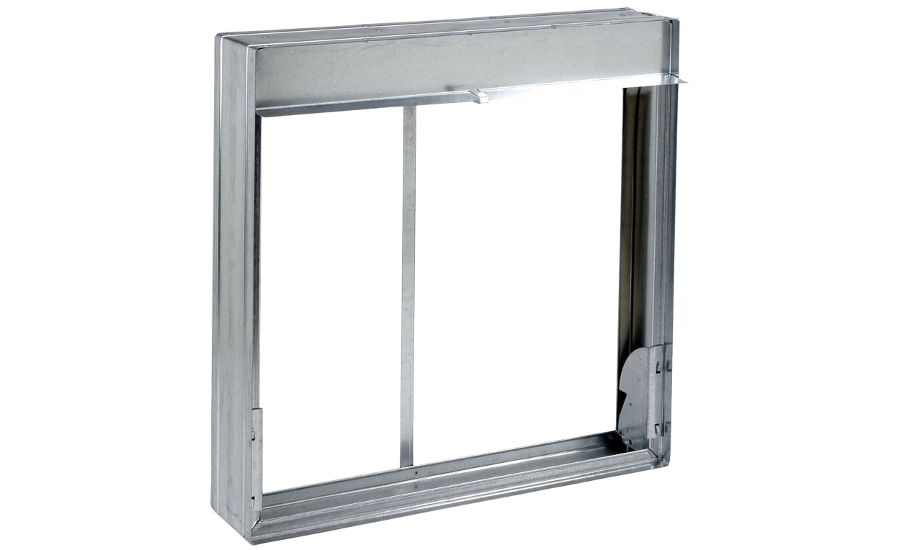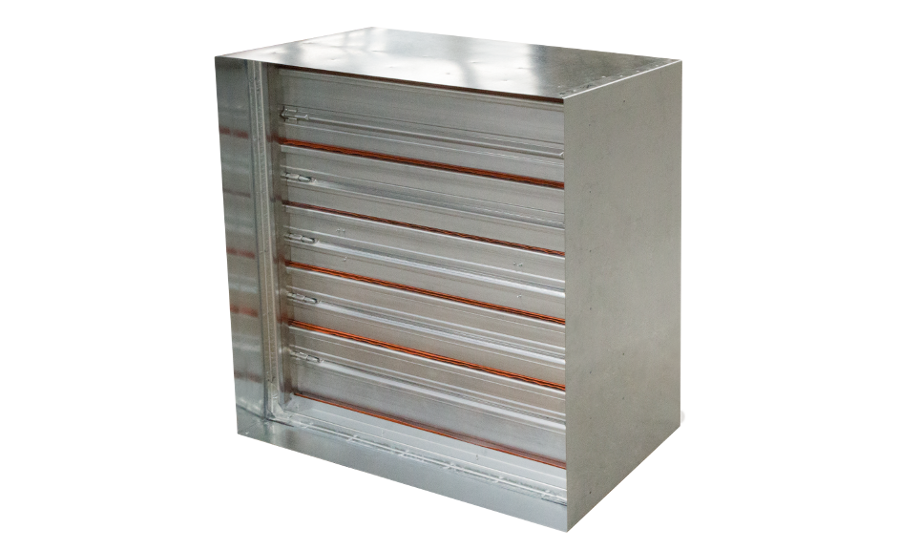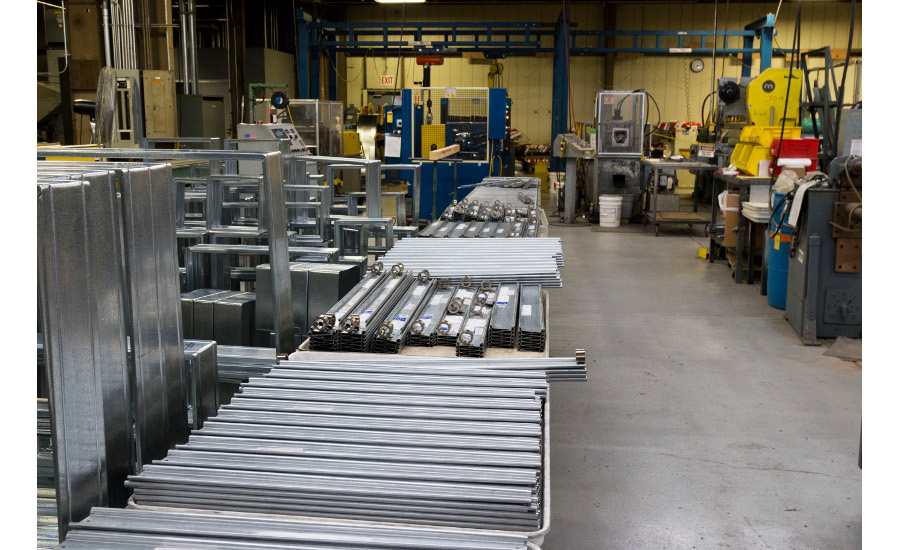The NFPA 2018 conference and expo is one of the world’s biggest and most comprehensive events for fire, electrical and life safety.
This annual event is an opportunity for engineers and general contractors to gain valuable insight on the life safety industry, to meet with other industry professionals, and to learn about the latest products and solutions for fire safety.
The NFPA 2018 conference provides seminars on important industry information, everything from the latest news on new regulations and standards to the newest innovations in the fire safety industry. There is plenty to gain from attending the conference portion of show, but what about the expo portion? What can engineers gain from walking the expo floor? To find out, we turned to our resident expert on UL life safety solutions.
Before the start of the conference, Air Balance interviewed Greg Crosby to get his take on the expo portion of the show. Crosby has provided HVAC and airflow regulation equipment for the construction industry since 1976. He knows the ins and outs of UL life safety dampers, such as fire dampers and smoke dampers. He also gave some advice on UL life safety dampers.
“When you attend NFPA, you will learn that there are two parts to an effective fire suppression system,” Crosby said.
Active
There is the active system, which consists of sprinklers and fire extinguishers. Active systems are the equipment that put out the fire or slow its progress into other parts of the building. Then, there is the passive system. Passive systems are designed to prevent either smoke or fire from passing through parts of the building, known as compartments in UL terminology. Passive systems consist of UL-rated fire barriers and life safety dampers, to contain fire and smoke within a compartment.
Air Balance deals with the passive fire suppression system, manufacturing fire dampers, smoke dampers, and combination fire/smoke dampers that go into passive fire suppression systems.
On the NFPA expo floor, vendors display a variety of parts that make up active and passive fire suppression systems. Usually, there are more parts on display for active systems than for passive.
“Sprinklers are popular for active systems,” Crosby said. “Studies show that a sprinkler has a 95 percent chance to activate in a fire and puts out the fire 96 percent of the time. However, you need a passive fire-suppression system working with the active system.”
In many building codes, passive fire suppressors are required. A building will need a passive system in place, such as fire barriers and smoke containment systems. Fire, fire-smoke, and smoke dampers make up an important part of those passive systems.
“When you have a penetration in a fire barrier, you need a fire damper installed in that penetration,” Crosby pointed out.
Generally, penetrations are holes in the wall made for ventilation purposes, such as air intake or exhaust points for HVAC systems. These penetrations are connected to the overall HVAC system by ductwork.

Dynamic curtain fire dampers remain opened during standard operation, allowing air to flow freely through the ductwork.
Ductwork installation
Crosby explained that fire dampers are installed in this ductwork to prevent fire from spreading through these penetrations. This will keep the barrier intact during a fire.
Fire dampers can be designed for static or dynamic airflow conditions. Dynamic fire dampers will close even when air is moving through the duct. Static dampers need still air conditions to properly close.
“During a fire, your fans might continue pushing air through the ductwork,” he said. “There are a few reasons why you would want this. In this case, dynamic fire dampers are important.”
He also explained that every fire damper is rated for a period: either 1 ½ hours or 3 hours.
“This rating shows how long the damper will remain intact during a fire. Each rating must coincide with the fire barrier’s rating. A two-hour rated fire barrier requires a 1 ½ hour rating, while a four-hour rating requires a three-hour-rated fire damper,” Crosby said.
Crosby said combination fire-smoke dampers are designed to prevent the spread of both fire and smoke at the same time.
“So, you need to consider all the same things that you did with fire dampers, plus a few more things for smoke dampers,” he said.

Static curtain fire dampers need still air conditions to close.
Standards
In other words, combination fire-smoke dampers adhere to both sets of standards. This fact makes these dampers a popular choice for either application.
He went on to explain the important traits to consider when choosing smoke dampers.
“Each smoke damper will have a temperature rating of 250°F or 350°F,” he said. “This rating relates to the air temperature in the ductwork during a fire. Smoke dampers are designed to withstand their rated temperature when closed.”
Smoke dampers also have an air leakage rating. The rating goes from class 1 to class 3, depending on its ability to keep smoke from leaking through when the damper is closed.
Class 1-rated smoke dampers allow the least amount of smoke through the closed damper, making it the best possible leakage class. Generally, most smoke dampers are Class 1 or Class 2. Crosby said you should always aim for a Class 1 smoke damper.
“On top of that, smoke dampers also have an operational rating; or a maximum velocity and a maximum static pressure at which the damper must operate,” he added.
In other words, smoke dampers are rated to close at a given air pressure and air velocity. If the smoke damper’s operational rating falls below the duct’s maximum air velocity and pressure, it is not guaranteed to close when you need it to.

Combination fire-smoke dampers prevent the spread of fire and smoke.
Fires
In some instances, like in smoke control systems, you may need the smoke damper to reopen during a fire event.
“You should ask the manufacturer if the damper model allows for re-opening,” he said. “This is the best way to know for sure.
He then discussed the benefits of choosing UL Life Safety dampers from Air Balance.
“Air Balance offers fire, smoke and combination fire-smoke dampers, along with accessories for each type of damper,” he said. “All of our life safety dampers are UL rated for each intended purpose and have all the necessary ratings. We also offer ceiling radiation dampers for ceiling penetrations, to help prevent the spread of radiant heat between floors.
“Air Balance provides high-quality HVAC products at competitive prices, including UL life safety dampers, standard air control dampers, louvers, and more. We also offer a variety of expedited delivery options for every product. We invite you to take a balanced approach to your next construction project.

Smoke dampers can prevent the spread of smoke or redirect it to other parts of the building when paired with a smoke control system.
Training
“And if you want to know more about UL life safety dampers, you can also go online and take our continuing education course on the subject. We offer this course, free of charge, through ‘AEC Daily.’ You can go to AECDaily.com and search for Air Balance, or use the link provided at the bottom of this interview article.”
Our self-paced course is free to take and covers all the important factors to consider when choosing UL Life Safety dampers. It takes about an hour to complete and offers continuing education credits from several professional institutions, including ASHRAE and the American Institute of Architects.
You can also schedule a live learning session of our UL life safety course, taught by industry professionals from MCDLG. Live Learning sessions are free to sign up for and attend, just like the online course. And they offer the same continuing education credits and benefits of our online course. We want you to take our UL life safety course on your terms.

Air Balance manufactures UL life safety dampers for passive fire protection systems.
UL builds trust in the safety, security, and sustainability of products, organizations, and supply chains – enabling smarter choices and better lives. All UL-rated life safety dampers are tested to meet UL standards 555 or 555-S, depending on the damper’s function. Visit UL’s official listing for life safety dampers, for the latest on those standards.
Special thanks to Greg Crosby for taking part in this interview, conducted by MCDLG and Air Balance. Did you see Mestek at the NFPA 2018 conference and expo? Be sure to follow us on Facebook for all the latest news on MCDLG and its brands, including Air Balance. Or visit our website for more resources on HVAC solutions, including control dampers, ventilation louvers, and more. Visit NFPA online for the latest news on the fire safety industry and for information on future conferences.


Report Abusive Comment